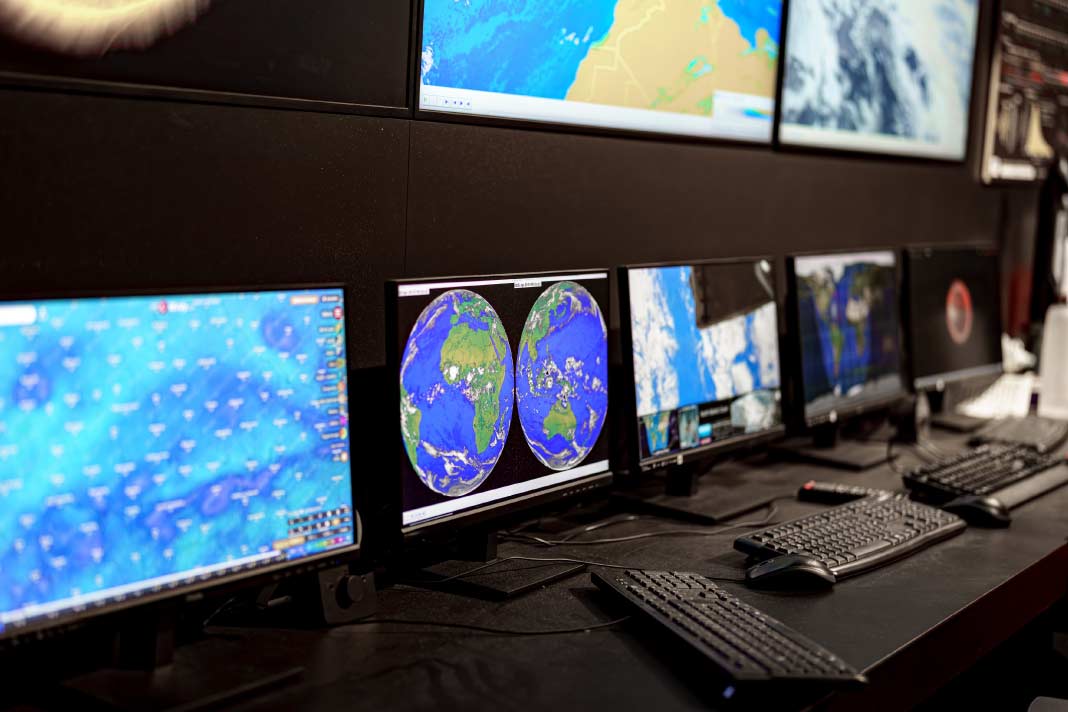Google’s new WeatherNext 2 model delivers faster, higher-resolution forecasts and hundreds of scenario predictions, now available across Search, Maps, and Cloud tools.
The influence of weather on critical daily decisions—from global supply chains and flight paths to personal commutes—is pervasive. Recent years have seen artificial intelligence (AI) fundamentally transform the capabilities and applications of weather forecasting.
Introducing WeatherNext 2: Faster, Higher-Resolution Forecasting
Google DeepMind and Google Research announced WeatherNext 2, their most advanced and efficient forecasting model to date. This new system represents a significant breakthrough, capable of generating forecasts eight times faster and with a resolution of one hour or less.
The core innovation driving this speed and accuracy is a novel model that can produce hundreds of possible scenarios from a single input. Leveraging this technology, Google has already supported weather agencies with experimental cyclone predictions, allowing them to make critical decisions based on a wide range of potential outcomes.
Also Read: How Explainable AI Builds Trust in Data Decisions
From Research to Public Deployment
Google is now moving this sophisticated research out of the lab and into the hands of users.
- Data Access: WeatherNext 2’s forecast data is now available through Earth Engine and BigQuery.
- Custom Inference: An early access program is also launching on Google Cloud’s Vertex AI platform, enabling users to perform custom model inference.
- Wider Integration: The underlying WeatherNext technology has already been incorporated to upgrade forecasts across Google Search, Gemini, Pixel Weather, and Google Maps Platform’s Weather API. It is slated to power weather information in Google Maps in the coming weeks.
Predicting the Full Range of Possibility
Accurate weather prediction requires capturing the full spectrum of possibilities, especially worst-case scenarios, which are essential for effective planning.
WeatherNext 2 can predict hundreds of potential weather outcomes from one starting point. Crucially, each prediction takes less than a minute on a single TPU (Tensor Processing Unit)—a process that would require hours on a supercomputer utilizing traditional physics-based models.
The model is highly skillful, providing higher-resolution, hourly predictions. Overall, WeatherNext 2 surpasses its predecessor, the state-of-the-art WeatherNext model, on 99.9% of variables (such as temperature, wind, and humidity) and lead times (0–15 days), resulting in more valuable and accurate forecasts.
The Functional Generative Network Breakthrough
This improved performance is enabled by a new AI modeling approach known as a Functional Generative Network (FGN).
- The FGN injects ‘noise’ directly into the model’s architecture.
- This process ensures the generated forecasts remain physically realistic and interconnected.
This method is particularly adept at predicting what meteorologists call “marginals” (individual elements, such as the temperature at a location) and, critically, “joints.”
A key innovation: The model is trained only on marginals but learns to skillfully forecast ‘joints’—large, complex, interconnected systems that show how all the individual pieces fit together. This sophisticated joint forecasting is vital for high-impact predictions, such as identifying entire regions affected by high heat or estimating power output across a wind farm.
Also Read: How Is Neat Transforming Hybrid Work with AI and Inclusivity?
Commitment to the Global Community
With WeatherNext 2, Google is transitioning cutting-edge research into high-impact applications, committing to advancing the state of the art and making its latest tools available globally. Looking ahead, the company plans to integrate new data sources and further expand access. By providing these powerful tools and open data, Google aims to accelerate scientific discovery and empower a global ecosystem of researchers, developers, and businesses to address the world’s most complex problems.



